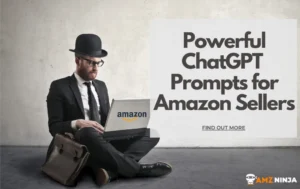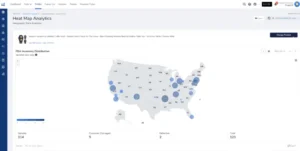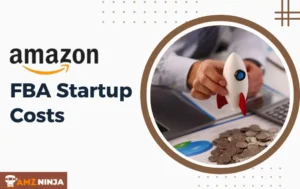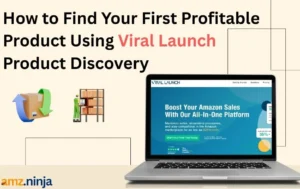
Ready to Take Your Brand to the Next Level?
Let's talk about Amazon Sponsored Brands – your secret weapon for standing out in the crowded Amazon marketplace. These ads are like billboards on the digital highway, catching shoppers' eyes right when they're in buying mode.
But here's the kicker: Amazon Sponsored Brands are not just slapping your logo on a banner and calling it a day. Nope, there's an art to mastering Sponsored Brands, and that's exactly what we'll get into.
So, buckle up and get ready to transform your Amazon advertising game!
What are Amazon Sponsored Brands?
Before we jump into the strategies, let's quickly recap what Amazon Sponsored Brands are and why they're so valuable.
Amazon Sponsored Brands are customizable ads that appear at the top, middle, or bottom of search results on Amazon. They typically include:
These ads are designed to increase brand awareness and drive sales by directing shoppers to your brand's store page or a custom landing page featuring your products.
Now that we've covered the basics, let's explore how to maximize your ROI with these powerful ads!
Tips & Tricks to Succeed in Amazon Sponsored Brands
| Tip | Know More |
|---|---|
| Access Enhanced Targeting for Precision | Utilize Product Attribute Targeting (PAT) to show ads alongside specific brands, products, or price ranges. |
| Craft Compelling Ad Content That Converts | Create custom headlines that align with your brand message and use high-quality images or videos. |
| Use Advanced Analytics | Use business metrics like total revenue, gross profit, and TACoS (Total Advertising Cost of Sale) to measure performance. |
| AI-Powered Optimization | Take advantage of Amazon's dynamic optimization feature to automatically select the most relevant products for your ads. |
| Proper Keyword Strategy | Use search term reports to discover quality keywords and employ all three match types (broad, phrase, exact) to maximize return. |
| Optimize Your Product Selection and Ad Creative | Choose products that align with your keyword strategy and ensure your brand logo meets Amazon's creative guidelines. |
| Advanced Features and Ad Formats | Experiment with different ad formats like video ads and utilize features such as Brand Follow and Posts. |
| Implement a Holistic Amazon Advertising Strategy | Combine Sponsored Brands with other ad types like Sponsored Products for a comprehensive approach. |
| Continuously Test and Refine Your Approach | A/B tests different ad elements, including videos, and analyzes metrics like click-through rate (CTR) and conversion rate (CR). |
| Adapt to Changes | Keep up with Amazon's policy updates and new features to maintain compliance and leverage new opportunities. |
1. Access Enhanced Targeting for Precision
One of the keys to maximizing your ROI is ensuring your ads reach the right audience. Enhanced targeting in Amazon Sponsored Brands allows you to precisely reach your desired audience by utilizing Product Attribute Targeting (PAT). This feature enables you to display ads alongside specific brands, products, or price ranges, ensuring your ads are seen by the most relevant shoppers.
Tips for Enhanced Targeting
💡 If you sell fitness gear, consider targeting health-conscious individuals who frequently purchase wellness products. This can significantly improve ad relevance and engagement.
2. Craft Compelling Ad Content That Converts
Your ad content is the face of your brand in the search results. Creating compelling ad content is crucial for converting shoppers into buyers. Focus on crafting custom headlines that resonate with your brand's message and use high-quality images or videos. Engaging visuals and clear, persuasive text can significantly boost your click-through and conversion rates.
Strategies for Compelling Ad Content
🎥 Video Ad Tips: If you're using video ads, keep these additional points in mind:
- Keep videos short and engaging (usually 15-30 seconds).
- Showcase your product in action.
- Use captions, as many viewers watch without sound.
- End with a strong CTA.
3. Use Advanced Analytics
Utilizing advanced analytics is key to optimizing your Amazon Sponsored Brands campaigns. Leverage business metrics like total revenue, gross profit, and TACoS (Total Advertising Cost of Sale) to measure performance. These insights help you make data-driven decisions, refine strategies, and maximize your advertising ROI.
Making the Most of Analytics
📈 Don't just look at surface-level metrics. Understand the “why” behind your numbers. For example, if your CTR is high but your conversion rate is low, you might need to optimize your product listings or pricing strategy.
4. AI-Powered Optimization
AI-powered optimization in Amazon Sponsored Brands leverages machine learning to enhance ad performance. This technology dynamically selects the most relevant products for your ads, ensuring they reach the right audience at the right time, ultimately boosting engagement and conversion rates.
How to Use AI for Optimization?
AI Can Help You:
✅ Identify the most relevant keywords based on current market trends.
✅ Adjust bids in real-time based on competitor activity and conversion likelihood.
✅ Personalize ad content for different customer segments (e.g., eco-conscious shoppers vs. luxury beauty enthusiasts).
✅ Predict which products are likely to sell out and adjust ad spending accordingly.
Remember, while AI can greatly enhance your campaigns, it's important to maintain human oversight and align the AI's decisions with your overall business strategy.
5. Proper Keyword Strategy
Keywords are the foundation of any successful Amazon advertising campaign. A well-crafted keyword strategy can significantly boost your ROI by ensuring your ads appear in front of the right audience at the right time.
Keyword Strategy Best Practices

Try Helium 10's Cerebro & Magnet
Amplify your keyword research with the best in-game keyword research tool (#1 Amazon Sellers Tool). Use Cerebro to find keywords via ASIN, and try Magnet to find keyword opportunities.
Use Code “BLOGE6M20” to get 20% Off for 1st Six months.
6. Optimize Your Product Selection and Ad Creative
The products you choose to feature in your Sponsored brand ads and how you present them can make a significant difference in your campaign's performance.
Product Selection and Creative Optimization
Creative Best Practices:
- Use contrasting colors to make your ads stand out.
- Keep the text concise and easy to read.
- Use lifestyle images to help customers envision using your products.
- Include any relevant certifications or awards.
7. Advanced Features and Ad Formats
Amazon regularly introduces new features and ad formats for Sponsored Brands. Staying up-to-date with these offerings and incorporating them into your strategy can give you a competitive edge.
Advanced Features to Explore
💡 Innovation Tip: Always be on the lookout for new features and beta tests from Amazon. Being an early adopter can often give you a temporary advantage in the marketplace.
8. Implement a Holistic Amazon Advertising Strategy
While Sponsored Brands are powerful on their own, they work best as part of a comprehensive Amazon advertising strategy.
Integrating Sponsored Brands with Other Ad Types:
🔄 Synergy in Action: Here's how you might use multiple ad types for a product launch:
- Use Sponsored Brands to create awareness for your new product line.
- Target specific keywords with Sponsored Products ads.
- Retarget viewers with Sponsored Display ads.
- Use Amazon Posts to share behind-the-scenes content about the product development.
- Host an Amazon Live event to demonstrate the new products.
9. Continuously Test and Refine Your Approach
The key to long-term success with Amazon Sponsored Brands is continuous testing and refinement. The marketplace is always changing, and what works today might not work tomorrow.
Testing and Refinement Strategies:
🔬 Testing Framework:
- Form a hypothesis.
- Design the test.
- Run the test for a statistically significant period.
- Analyze the results.
- Implement changes based on insights.
- Repeat the process.
10. Adapt to Changes
The Amazon advertising landscape is constantly evolving. Staying informed about changes and new features is crucial for maintaining and improving your ROI.
How to Stay Updated?
Quenching Common Queries Related to Amazon Sponsored Brands
How Do I Access Enhanced Targeting?
Use Product Attribute Targeting (PAT) to display ads alongside specific brands, products, or price ranges for more precise audience targeting.
What Makes Ad Content Compelling?
Craft custom headlines that align with your brand message and use high-quality images or videos to engage and convert shoppers.
Why are Advanced Analytics Important for Amazon Sponsored Brands?
Advanced analytics provide insights into metrics like total revenue and TACoS, helping you make data-driven decisions to optimize your ad performance.
How Can I Optimize Product Selection and Ad Creative?
Choose products that align with your keyword strategy and ensure your visuals meet Amazon's creative guidelines, using high-quality images or videos.
How Often Should I Test and Refine My Approach for Amazon Ads?
Continuously A/B test different ad elements and analyze metrics like CTR and conversion rate to refine and improve your campaigns.
Your Path to Amazon Sponsored Brands Success
You're now armed with the insider knowledge to rock your Amazon Sponsored Brands campaigns. Remember, success doesn't happen overnight, but with these tips in your toolkit, you're well on your way to becoming an Amazon advertising superstar.
Your brand has a unique story to tell, and Sponsored Brands is your megaphone to shout it from the digital rooftops.
Who knows? Your next campaign might just be the one that takes your brand from a hidden gem to a household name. Now get out there and show Amazon shoppers what you're made of.
Now it's your turn! Which of these strategies are you most excited to implement in your Amazon Sponsored Brands campaigns?
Do you have any additional tips to share?
Let us know in the comments below, and here's to your success on Amazon! 🚀







